Mark Millar has been on a press tour of sorts for Big Game – a crossover between all of his various books, including Kick-Ass, Kingsman, Nemesis, The Magic Order and MORE. (Huck?) – as well as The Chosen One, the latest media offering from Netflix’s purchase of the Millarworld library back in 2017.
The campaign has mostly been on his Twitter account, but Millar also released some comments on a livestream of the sort that comics pros usually reserve for late night BarCon banter, and his ideas made for some headlines, especially his picking up on the idea that the direct market is in bad shape. His solution? Get the veterans to return to the drawing boards:
According to Millar, around 20 legendary comic book writers should stage a comeback at both DC and Marvel, for at least two-year runs. Millar emphasized, “We’ve got to man the stations. I think everybody’s got to come in and do a couple of projects and find an artist who’s as good as you can possibly get and just do some killer run on something.” Sharing his personal interactions with comic book stores, he asserted, “The retailers, they’re struggling out there. They’re dying. All my friends and retailers are saying it’s never been, they’ve never known it as hard as this.” His proposal revolves around assembling authors such as Olivier Coipel and Pepe Larraz to execute captivating arcs, envisioning a rejuvenated era of comics.
The funniest thing about this – to me anyway, is that back in 2010, another “low point” in comics, on a panel Millar stated that “it’s desperation that creates innovation in any medium, and I’d like to see comics more innovative.” Talking about it after the panel, he told me that real progress at Marvel and DC only came when they were desperate and sales were slipping.
It kinda, sorta seems like opposite advice, but Millar has some weird ideas these days, and people change. So maybe manning the battle stations with the top talents of the Aughts and Teens is the way to Save Comics This Time.
2023 Millar is also down on creator-driven comics, saying that there hadn’t been any creator owned success stories in comics since Saga (which debuted in 2012) and he thought that would be the last one. (Bear in mind I’m not going to sit through this livestream so I’m only repeating reports of Millar’s comments.)
I’m not exactly sure what happened behind the scenes, but all this talk possibly shook out a list from Image Comics which has been circulating on other comics websites, and led to some commentary from Comicbook.Com.
Before looking at the list, I should note that I’ve heard from several sources that Image Comics is one of the publishers that would like to have their sales successes documented more, although that seems to be impossible in the multi-distributor era. As I’ve noted many time, a lack of sales charts is actually hurting everyone in the industry, and more people are beginning to comment on this.
So whatever the origin of this leaked list, is does help show that far from languishing from grief at the lack of a new Saga, Image seems to have been doing quite well with a bunch of titles from many creators.
The list doesn’t include sales figures, but we can go with John Jackson Miller’s Comichron numbers for some of them. I’ve included those numbers for the #1 book and the #25 book – but note these are additions and were not included in the original list.
- KING SPAWN (Todd McFarlane Productions) 2021 – 480,650
- GUNSLINGER SPAWN (Todd McFarlane Productions) 2021
- SCORCHED (Todd McFarlane Productions) 2021
- SPAWN’S UNIVERSE (Todd McFarlane Productions) 2021
- CROSSOVER (Donny Cates/Geoff Shaw) 2020
- TWIG (Skottie Young/Kyle Strahm) 2022
- JUPITER’S LEGACY (Mark Millar/Netflix) 2013
- NOCTERRA (Scott Snyder/Tony S Daniel) 2021
- STRAY DOGS: DOG DAYS (Tony Fleecs/Trish Forstner) 2021
- MOM: MOTHER OF MADNESS (Emilia Clarke/Marguerite Bennett/Leila Leiz) 2021
- VANISH (Donny Cates/Ryan Stegman) 2022
- VOID RIVALS (Robert Kirkman/Skybound) 2023
- THE WALKING DEAD DELUXE (Robert Kirkman/Skybound) 2020
- DEPARTMENT OF TRUTH (James Tynion IV/Martin Simmonds) 2020
- W0RLDTR33 (James Tynion IV/Fernando Blanco) 2023
- SKYBOUND X (Robert Kirkman/Skybound) 2021
- PRIMORDIAL (Jeff Lemire/Andrea Sorrentino) 2021
- OUTCAST (Robert Kirkman/Skybound) 2014
- UNDISCOVERED COUNTRY (Scott Snyder / Charles Soule/ Giuseppe Camuncoli) 2019
- GEIGER (Geoff Johns/Gary Frank) 2021
- WHATS THE FURTHEST PLACE FROM HERE (Matt Rosenberg/Tyler Boss) 2021
- WYTCHES (Scott Snyder/Jock) 2014
- REBORN (Mark Millar/Netflix) 2016
- OBLIVION SONG (Robert Kirkman/Skybound) 2018
- WE STAND ON GUARD (Brian K. Vaughan/Steve Skroce ) 2015 – 86,265
The first thing that commentators noticed is that Saga isn’t even on this list. Instead BKV is represented by We Stand On Guard, a super high concept book about the US and Canada going to war. It was a lot of fun but not mentioned much in the BKV oeuvre.
The rest of the list is full of similar surprises – which is exactly why we need sales charts! (They also spurred some of the moe insightful writing about the industry I’ve read in a while.) I don’t think many people have clocked Stray Dogs by Tony Fleecs and Trish Forstner as a big hit, but it is. At CB.com, Russ Burlinghame wrote:
The absence of Saga — or of 2012 books like The Manhattan Projects and Fatale — are missing from the list entirely. What the list does seem to underscore, more than an existential crisis at Image Comics, is the growing comics market. Costs are soaring, leaving retailers feeling lean, but gut feelings aren’t numbers, and actual sales in dollars have been consistently trending upwards in comics for a number of years now. So, it makes sense that so many of these best-sellers — all of which reportedly sold 80,000 copies or more, with the top third up over 100,000 (some as high as 500,000, which even by Marvel and DC standards is astronomical) — have come out in the last few years.
While I don’t agree that comics are dying, they were undoubtedly doing better overall, two years ago, and retailers are troubled these days. I was talking to an industry colleague last week who told me that in May, direct market orders seemed to plummet sharply, across the board from Marvel on down – kind of like that old Tower of Terror ride. Why? I’m still trying to find out. Given the widely-reported Marvel Malaise, and lack of any “We’re number one!” cheerleading, it’s easy to see how doom and gloom spreads even when things aren’t actually that bad.
In fact I’ve been told by a few people that Image sales have remained strong. Of course I don’t have any numbers to back that up – or any of this really – but since anecdotes are all we have to go on, there you are.
It doesn’t mean we’re not in a worrying time though. The lack of comics buzz at San Diego – with no competition from media news – was concerning. The Millar Plan – bring back the top stars on the top books – would definitely create some headlines. Bu I’m not sure we agree on just who the “top stars” are.
It’s worth noting that 2012 was the year of the first Image Expo, the first in a series of star studded events that wowed the comics industry with tons of huge names doing new creator owned projects, including Saga at the first one. Image Expo grew for a few years – at the second one Karen Berger came strolling out, melting the comics internet – and I believe the last one was held in 2018. Maybe more were planned before the pandemic, but none has been held since. At least one was held at San Diego, and it made lots of headlines. Imaeg Expo was a huge thing while it lasted and it totally shook up the industry.
Would all the old guard returning to Marvel and Dc really spark a renaissance? Burlinghame again:
Bleeding Cool’s thesis seems to be, basically, that Millar is wrong about his idea that big-name creators should all go and do a mainstream superhero miniseries to generate buzz for the direct market. That’s really a matter of opinion and both Johnston and Millar have some solid evidence in their corner. But something worth noting is that Todd McFarlane and Greg Capullo reunited for Batman/Spawn earlier this year, and while no specific numbers have been released, the lack of any specific numbers virtually guarantees that it didn’t move the kind of numbers that McFarlane’s own Spawn spinoffs did. If a massively-hyped event featuring two beloved creators on the biggest superhero in American comics, didn’t match up to the sales on a creator-owned spinoff book by the same writer…well, that kind of puts to lie the idea that if everybody just stops making their own books and focuses on a DC or Marvel title for a year, things will be perfect again.
Arguably the biggest announcement at Comic-Con 2023 was Greg Capullo returning to Marvel, and I don’t see anyone saying that that’s going to save comics. I’d wager that much of Millar’s concern about the industry is that HIS books aren’t selling as well as they used to. There just aren’t many names that move the needle. As you can see from the Image chart, Donny Cates went on a hot streak, Robert Kirkman still shifts books, and when Daenerys Targaryen write a comic book about menstruation and promotes it, retailers order the first issue. (Also those covers by Jo Ratcliffe were fire!)
Spawn is huge, but the character is relatively under-exposed and McFarlane still has the It Factor.
Comics publishers are justifiably worried about bringing in younger readers, but this butts right against the long-standing direct market strategy of selling to older, established readers, but just wringing the last penny out of them with variant covers, special editions, and multiple formats.
Sadly, these older readers are, frankly, dying, and just tiring of reading comic books. While a search for “comics collector demographics” yields scant information (which I’ll get to in a moment), we have more information for stamp and coin collectors – a not quite parallel group of spendy nerds. A 2021 report on US Mint collectors indicated:
The profile of the U.S. Mint’s customer base, people who are buying coins, is in many ways similar to what we see in the stamp hobby.
Gilkes reports, “In 2011, the statistics overall were 14 percent ages 18 to 44; 56 percent 45 to 64; and 30 percent 65 or older.
“For 2015 overall, the age demographics were 8 percent ages 18 to 44; 40 percent 45 to 64; and 52 percent 65 or older.”
A fairly stark portrait of an aging collector base there.
For comics, we have these stats reported by BookScan’s Kristen McLean at an ICV2 conference. Perhaps a photo of the relevant chart taken by Brigid Alverson tells the story:
Comics readers were mostly between the ages of 30-54 – younger than the coin collectors, but with manga grabbing the younger readers.
So who will save us this time? Marvel and DC are always sifting through little seen indie and webcomics to find new talent. In the case of Marvel, this is partly because they pay such low rates that – with a few notable, and doubtless better paid exceptions like Jonathan Hickman – big names don’t work for Marvel any more.
I suppose Brian K. Vaughan writing Spider-Man would get a big pop, or Mark Millar returning to Superman (something he says is happening when his Netflix contract is up.) But an even bigger pop would be (don’t hold your breath) Naoki Urasawa on Batman or Rachel Smythe on Wonder Woman.
These are impossible examples, but mostly because Urasawa and Smythe have their own very successful comics to write, and a solid distribution market to sell them. Olivier Coipel and Pepe Larraz are super talented, and maybe could deliver a fresh take on well known characters… but in order for that to happen, Big Two editors would have to unclench and allow a new take.
To sum this up (for now) I think Millar’s 2023 take is full of hooey. Far from being industry-stifling failures, creator-owned comics are actually driving the market. I think Millar was right the first time: Marvel and DC have to get terrified enough to actually try something new and stick with it long enough for readers to find it.


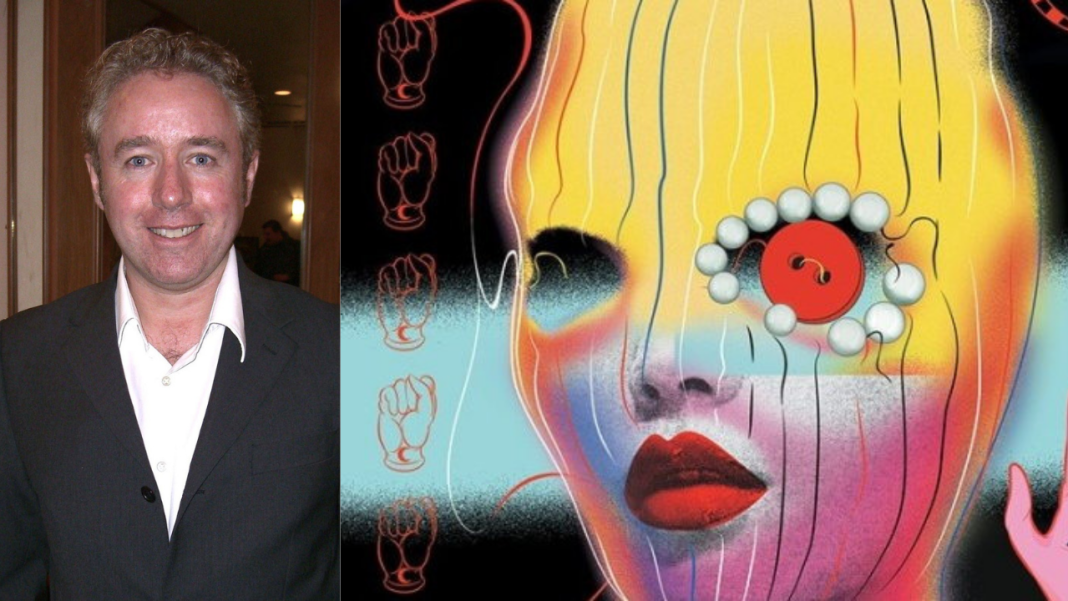
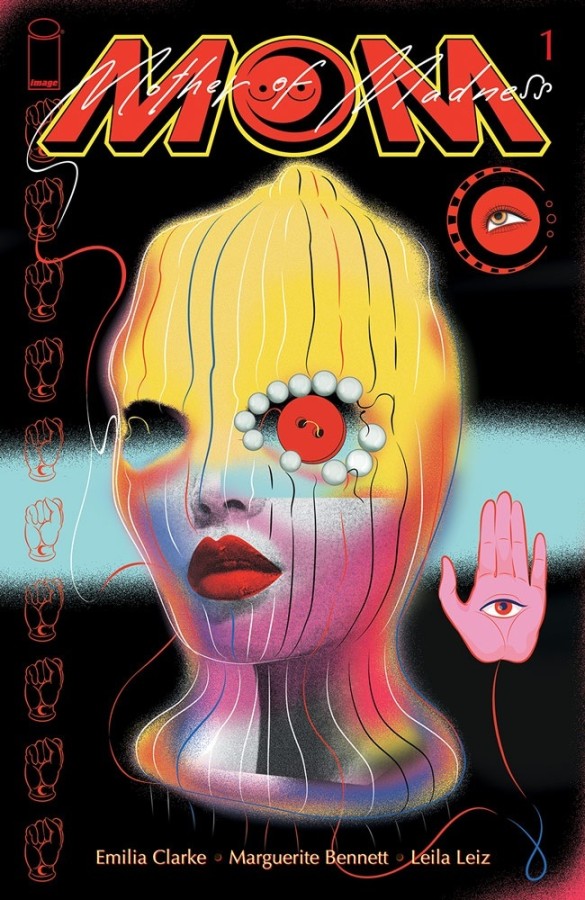
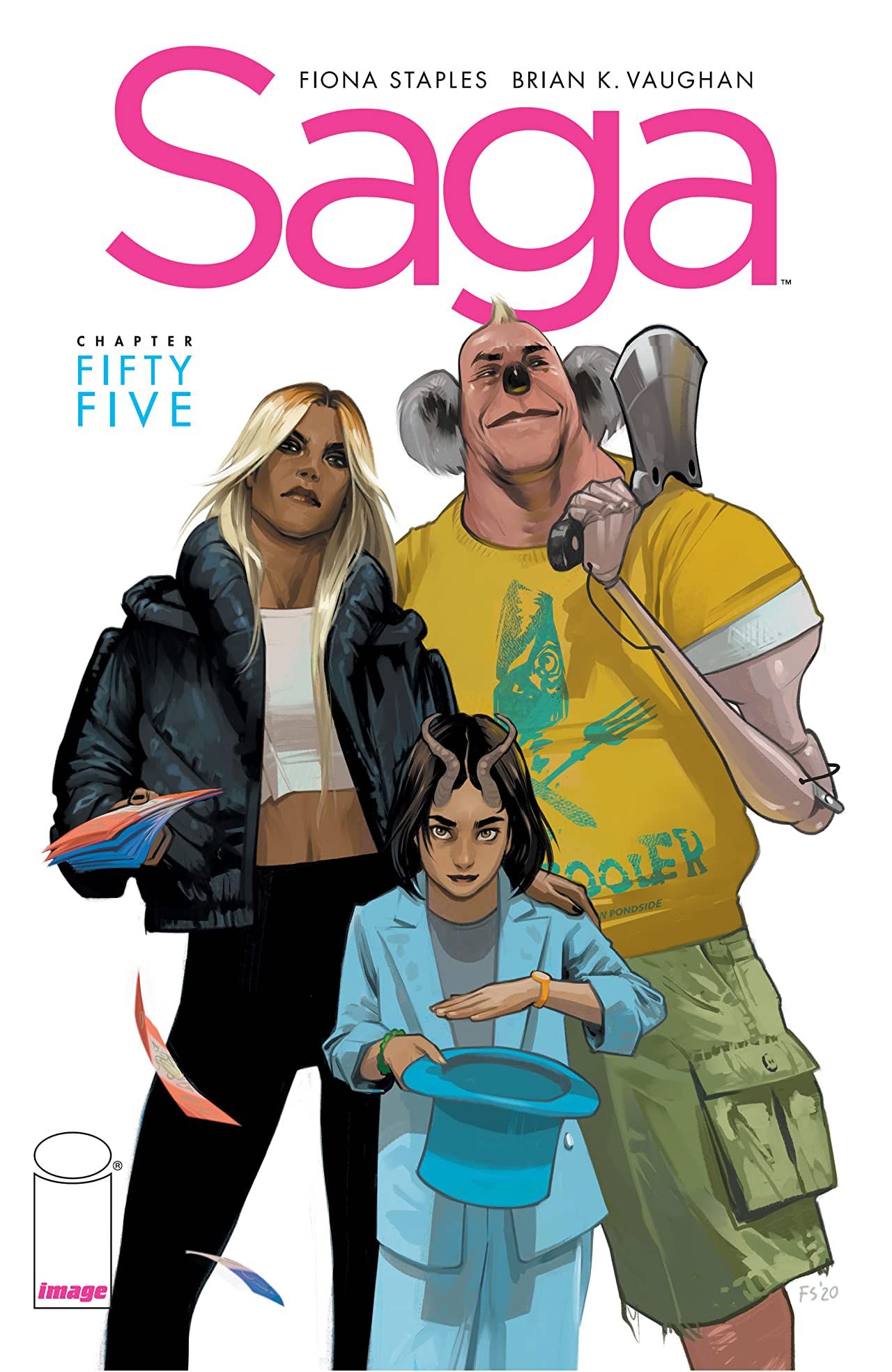
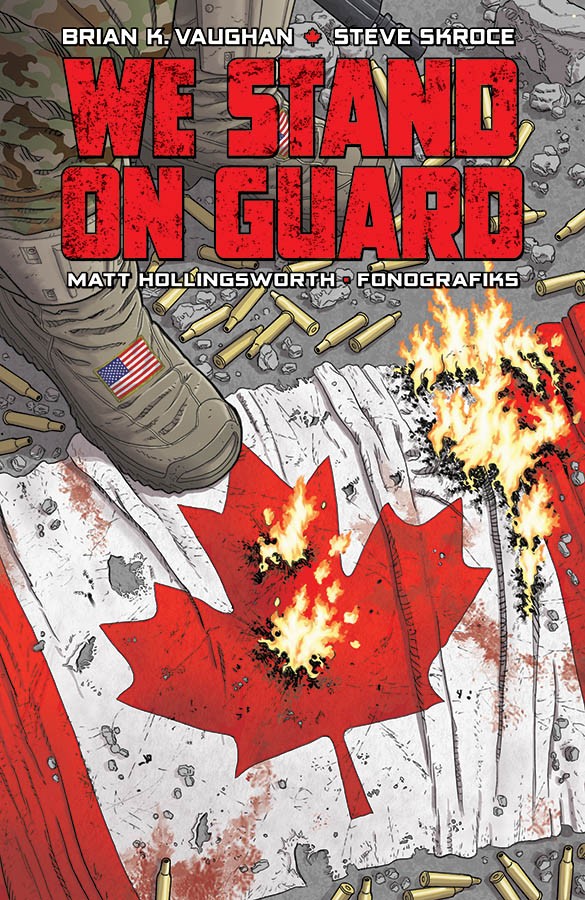
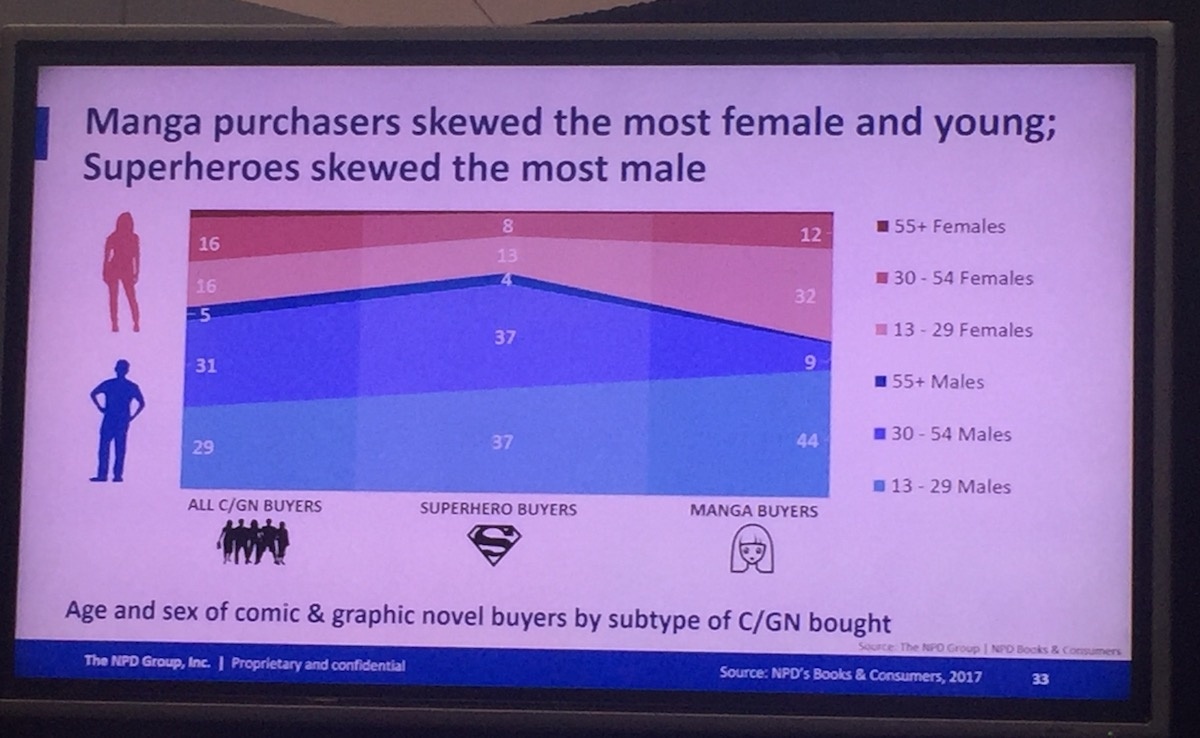
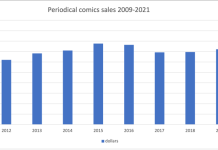




Very interesting analysis, Heidi. I’ll agree with your last paragraph. It’s going to take more than big names (whatever that means) to get the super-hero market moving again. I’m quite enjoying the Dawn of DC initiative and am interested in the overall direction of DC these days, but there still doesn’t seem to be a spark that would ignite interest outside the usual super-hero comics reading public. I have no idea what that would be.
I still think that some creators have a lot of cachet, and I wish Hickman had had a chance to write the Legion of Super-Heroes before the Bendis fiasco.
Be different. ‘Nuff said.
I’m not sure what that list is supposed to show. Saga was a hit not because #1 sold lots of units, but because it sold well and kept selling well for 60 issues, same for collected editions.
HsssH: Yeah, the ICV2 sales estimates for March 2012 have Saga #1 selling 37,641 copies. Like, it was a hit, but it wasn’t a megahit from the first issue.
When was the last time a ‘legendary creator’ returning to a big two character was genuinely exciting? Not at best comfortingly familiar but really thrilling? If you’re talking about creators whose big two heyday was more than twenty years ago then it’s been a while.
I miss sales numbers so much!
The issue with well known big two characters is that they’re so well known, that you can’t deviate too far from what people expect the characters to be. It’s why stories rely on manipulating the background and the world the characters reside rather than having anything that can genuinely surprise.
Superhero comics like Radiant Black or Rogue Sun, can go in any direction and can genuinely surprise and excite more.
Millar’s idea is fun, but I don’t see it being much more than a sugar high. Which if you are a comic shop and all you care about is getting a pop in revenue for a few months would be fine. But once those creators leave, I don’t see interest sustaining.
Mostly because the Big 2 publishers simply can’t help themselves. As soon as they have a hit, they run it into the ground because the higher ups at DC and Discovery/Warner – like so many corporations – only care about having a good number next quarter.
Want a recent example of this? Hickman’s X-Men run, which had more momentum around any super hero franchise I can recently remember following HoX/PoX and then…Marvel watered everything down by launching a bunch of X-related titles and the line quickly lost momentum as a result.
Heck, DC just completed their own “self-own” with the Dawn of DC momentum being snuffed out by an idiotic 2-month line-wide event.
Mark Millar might want creators to come in and “save” Marvel and DC, but the harsh reality is both companies would just find a way to screw it up in the end regardless how strong of work creators provide.
Preach it, Heidi! Millar has always been naught but a hot-air balloon.
I don’t really buy superhero comics anymore
While the rest of your are concerned with optics, perceptions
and the jobs of your friends in the industry a negative perception
of their performance might imperial, I am going to reach out to
today’s superstars, who are vastly superior to the creators in previous
decades, to ask them why there is a negative perception around their work.
Tini Howard, Vita Ayala,Kelly Thompson,Naoki Urasawa and Rachel Smythe
need to be asked why their work isn’t selling well and generating excitement.
If their work is selling well and is generating a lot of excitement why this being
suppressed by Mark Millar and his cabal of gate-keepers.
“Marvel and DC have to get terrified enough to actually try something new and stick with it long enough for readers to find it.” They did find new readers. Millions of new readersThe highest selling Marvel Comics in the last 20 years have been titles like The Unbeatable Squirrel Girl! Rocket Raccoon and Groot !! Pasty Walker: Hell Cat!! Black freakin’ Panther! All these titles brought more new readers the industry hadn’t seen in decades!! The problem is certain privileged people didn’t see themselves represented and are lashing out.
Personally, I’m not sure why people still define ‘comics’ as Marvel & DC. The industry has changed. Manga, Scholastic and other publishers are doing very well for themselves and very possibly better than both those publishers.
I also very much want comic shops to survive, but I think a big part of that is them adapting to stocking books that sell, instead of trying to make what they choose to stock sells. The direct market by and large missed the boat when it came to Manga, it’s possible that many stores are also missing the boat on YA GNs too. It’s a shame.
Millar’s plan would attract lapsed readers but wouldn’t bring in anyone new unless the concepts appealed. The things that have brought in new readers for the Big 2 in the past decade have been based on concepts (Spider-Verse, Superior Spider-Man) and new characters (Miles Morales, Ms. Marvel etc) that have had word of mouth and coverage outside the usual comics spaces.
The Axel Alonso era had the potential to increase the readership through appealing to untapped audiences but struggled to get footing due to relying too much on word of mouth beyond issue #1.
As for Image, I’m not surprised that the top Image #1 are more recent examples vs those of 2012. 2011-2012 was very much the start of that Renaissance Period for the publisher, rebuilt the brand. The comics of that time that resonated had slow starts (eg Saga building upwards from #1) with audiences not always discovering them until the TPB was available. Once the brand had been built more people decided to get in on the ground floor.
” The things that have brought in new readers for the Big 2 in the past decade have been based on concepts (Spider-Verse, Superior Spider-Man) and new characters (Miles Morales, Ms. Marvel etc) ”
You SAID it, girlfriend!
Wait, isn’t Dog Man the best-selling comic in the US? Creator-owned and released in 2016? And aren’t Raina Telgemeier’s Sisters, Ghosts and Guts creator-owned NYT best-sellers released since 2014?
Interesting.
Comments are closed.